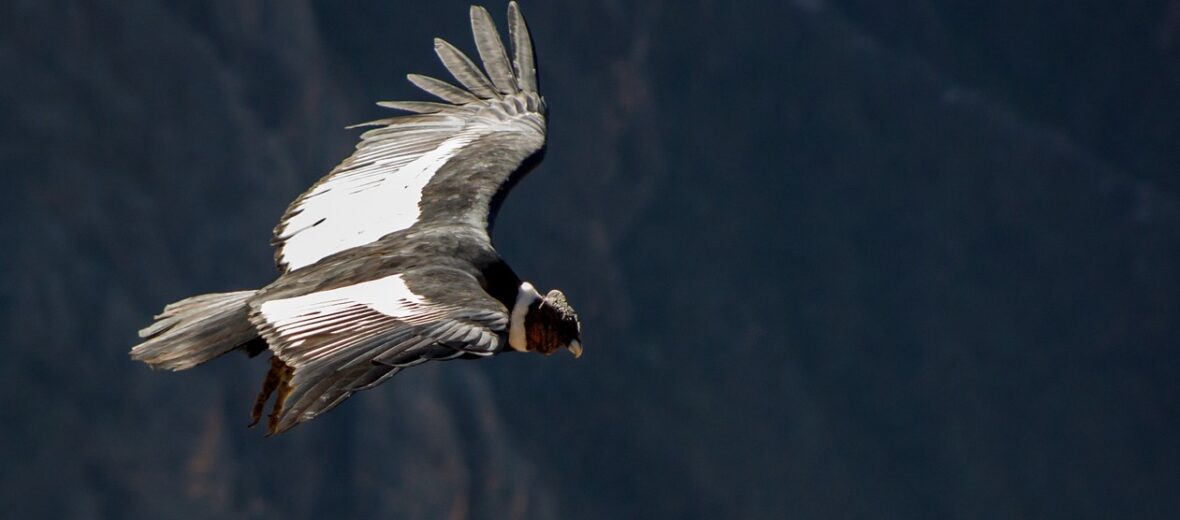
With an impressive wingspan of over 10+ feet, the Andean condor is considered as the largest flying bird in the world! They also have the largest wingspan of any raptor. Due to their enormous size, they aren’t the best at staying in the air. This is why these scavengers tend to reside in high wind areas. Once aloft though, they can reach elevations of up to and over 18,000 feet in the air!
First the Stats…
Scientific name: Vultur gryphus
Weight: Up to 33 lbs.
Length: Up to 4.3 feet
Wingspan: Up to 10.5 feet
Lifespan: Up to 70 years
Now on to the Facts!
1.) These raptors are sexually dimorphic (males and females look noticeably different). Males have yellow eyes and females have red eyes. Males are larger than females, and have a white ruff at the base of their necks. Females lack this ruff.
2.) Being vultures, the majority of their diet consists of carrion (dead animals). They act as a very important clean up crew.
3.) They are listed by the IUCN as Near Threatened due to habitat loss, hunting, and subsequent poisoning (animals are poisoned and the condors eat the dead and poisoned animal, poisoning the condor).
4.) Andean condors can consume around 15 lbs. of meat in a single sitting!
5.) Several zoos have engaged in condor breeding programs, aimed at revitalizing the populations.
But wait, there’s more on the Andean condor!
6.) These Condors only produce 1 egg every 2 years, and incubate for 54 – 58 days. Most Andean condors don’t build a protective nest for their egg. Instead, they simply lay the egg on a bare cliff edge.
7.) During the mating season, the male spreads his wings, clicks his tongue and hisses, and his neck turns yellow. All this to attract a female.
Did you know…?
The Incas believed that the condor brought the sun into the sky every morning and was even a messenger to the gods.
8.) Both parents incubate and raise the chick together, giving their young as much care and attention as possible.
9.) Baby Condors usually leave their parents by their 2nd year and take 6 – 8 years to reach adulthood.
10.) Andean condors have no natural predators, as adults. However, unattended chicks and eggs can meet their fate via raptors.
Now a Short Andean Condor Video!
Also, check out the Critter Science YouTube channel. Videos added frequently!
Want to suggest a critter for me to write about? Let me know here.



